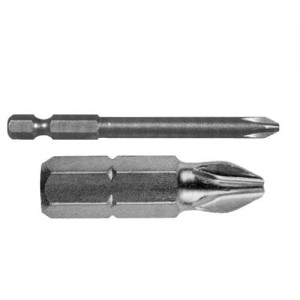So this afternoon I was playing with my new cordless drill, putting in some new upper handholds for the loft ladder. The originals weren’t terribly well engineered and had worked loosish, and some groggy morning one was going to pull right off the wall and send me crashing to the Lair’s floor. So I had some new fasteners – and rather more careful measurements – and intended to fix that ‘when I got around to it.’
This would have involved a corded drill and an extension cord, but now I had my new toy. Look, I’m not a complete naif, I’ve owned a cordless drill before. But I could never bring myself to pay for more than a bottom’o’the’line cheapie. It wasn’t much to start with, and using nicad batteries it quickly became rather less than that. You can buy a goodish corded drill for less than a foully bad cordless, so I just did that. It works, but it’s a pain sometimes. So this new 20V B&D is a treat, okay?
But as I did the chore I got to thinking. Here’s a bit of trivia: When did people start using household drills for screwdrivers? I seem to recall I was an adult before I brought home my first driver bit…
 …and before that, to me, a drill was just a drill. You used it for making holes in things, not for screwing them together. I’m fairly sure I was late to the show, because I always am, but still it was an innovation that started sometime. And I can’t think when it was, or come up with a productive search term.
…and before that, to me, a drill was just a drill. You used it for making holes in things, not for screwing them together. I’m fairly sure I was late to the show, because I always am, but still it was an innovation that started sometime. And I can’t think when it was, or come up with a productive search term.
Powered screwdrivers have been around for a century at least, that’s what Phillips screws were designed for. But when did people start using their drills as screwdrivers?
Anybody know?
















































When? Just as soon as it occurred to them. 🙂 I think it is a wonderful thing because I’m simply not strong enough to drive a screw with a regular manual screwdriver, and most of the little powered things I’ve tried just don’t have enough poop either. I have a ratchet thing to use for close quarters, but it also requires more strength than I can bring to bear most of the time. And it won’t couple to the drill either, unfortunately. There’s an opportunity for some smart engineer/inventor.
I think the first household cordless drills were early 80s, and they kind of opened the door when construction workers found them handy for drywall screws. Now I suspect there are folks who don’t even know they make screwdrivers without a battery driver motor attached.
Just a guess, but I’m thinking drills started getting used as screwdrivers when variable speed became a seriously controlable, reliable feature.
My first drill (Craftsman) had just one speed: way too fast for screws. As soon as it became possible to slow the drill down … voila!
I’d agree with Claire.
I got my first variable-speed drill, a 3/8″ corded Manning-Bowman, in like 1967 or so, and it immediately occurred to me that it had screwdriver possibilities. I then cut the handles off of a couple of “normal” screwdrivers, and . . .
😉
Before variable-speed drills you just guess-estimated when you reached tight. So until you master ‘guess-estimate’ you twisted off some heads and had to finish off some by hand or you backed it out a bit and went after it again. If you twisted off too many Dad was know to get a mite cranky.
In fact Claire’s mention of variable speed jogged a memory. I was building a window seat in the kitchen of our house with my father-in-law, and he had a variable-speed drill with driver bits. Seemed a fine idea so on a trip to the hardware store I bought one. But my drill was an old single-speed and the result was unsatisfactory. Pretty sure that’s the first time I gave it a try, and that was sometime in the early eighties.
I was a cheapskate then too, and didn’t adopt the practice until some years later when my old drill died. By then, of course, all drills were variable-speed.
And, shortly after, they gave up on Phillips head screws and moved to square drive, and from thence to Torx head, by which point they had already adopted quick change bit adapters.
I mostly gave up on Phillips head screws for a long time because the little X quickly became a formless divot in the end of the screw. Eventually, I learned to drill a little larger hole to start with, and that pretty much ended the problem with screws that came with things. I had, however, bought a divided box of assorted screws and hanger hardware, and eventually threw away all the screws. They were of such soft metal that the only thing they could be used for was attaching things to a strip of sponge cake…. And I had other uses for sponge cake. 🙂
The next leap of technology, of course, was when they became REVERSIBLE! What a feature!
Not sure, but I’m guessing this was made easier by virtue of the cordless stuff being of DC (battery) operation.
Oh! Oh! And then came ADJUSTABLE TORQUE . . .
😉
Yeah, what Claire said. Also, Phillips screws are the work of the devil in that they were designed to “cam out” on excessive torque. Square or Torx are mucho better for manly driving of big stuff.
For big stuff I like the hex head “log” screws. They come in lengths from 2.5 to at least 10 inchs. Since I got my Dewalt driver I have been using a lot more screws instead of nails. I keep regular “sheet rock” type screws from 3/4 to 3 inches. Makes alterations much easier.
Have to admit I was not familiar with “log” screws. So here we go . . .
http://www.loghelp.com/p-1516-olylog-screws.aspx
Very interesting. I can see many uses for these. Thanks, Howard!
Probably when someone used a drywall screw gun on a phillips head screw.
Drywall screwguns have been around for quite awhile.
Drywall screwguns are a pretty specialized tool; screwguns have “clutched” bits (standard bits, but a clutch mechanism inside the screwgun driving the bit retaining sleeve) so even with the motor running at top RPM the bit doesn’t turn until it’s pressed in a quarter inch or so. The usual technique is to lock the trigger ON, place a screw on the bit, press the screw against the work face firmly enough to engage the clutch and let the tool do the work driving it in. One adjusts the bit collar to provide the driving depth one desires, which will allow the clutch to disengage the bit when proper screwhead depth is reached; the goal is to set the head slightly below the drywall surface, stretching the paper face but not tearing it, allowing the finisher to easily and quickly mud over the screws. Once one learns how to operate the screwgun accurately perpendicular to the work face, it becomes easy – the soft drywall penetrates easily and helps align the screw while it’s driven into the studs. Figure about 50 screws per 4X12 sheet of drywall (the bigger the sheet one can use the better), about 10 sheets for a 10X12 room (don’t forget the ceiling) and you’re driving a lot of screws. Without the automatic bit clutching mechanism screwing more than a couple sheets of drywall up would be impractical, which is why no one uses any other tool for it. Drywall screws are phillips head because they align faster on the bit than any other head style, and head destruction isn’t much of an issue with fine or coarse thread drywall screws and (usually) the soft pine studs drywall is attached to (coarse thread drywall screws are designed for wood (pine) studs, the fine thread for metal studs used in commercial applications).
I spent a holiday weekend once putting 6000 stainless square drive 2″ flathead screws into 310 feet of fence (6 ft, 3/4″ thick, 5.5″ wide boards, 9 screws per) with a screwgun. Didn’t use phillips head because they cam out too easily, would have liked Torx head but couldn’t find ’em at an affordable price.
RE: “log” screws – check out http://www.spax.com. It’s just one brand name of screws, but they do make a lot of Torx head stuff, which is better than phillips or (IMHO) square drive. I’m particularly fond of their long washer head Torx drive screws for deck and fence structure assembly.
‘Tis a brave, new world. The last time I hung drywall we were using nails. (!)
😉
Just before Pop Rivets were introduced, back in the 60’s. We were building signs using sheet metal screws, and that meant a lot of screwing. So we’d cut the handle from a screwdriver, chuck it into the drill, and go to work. Of course, Pop Rivets changed all that, and I hope whoever invented them got filthy rich.
I’d MUCH rather drive screws with a brace and bit, every time I use a power screwdriver unit, I bugger the screws (with admittingly are pretty cheap a$$ screws). A brace will take care of things nicely, slower but thats okay, control is much better.